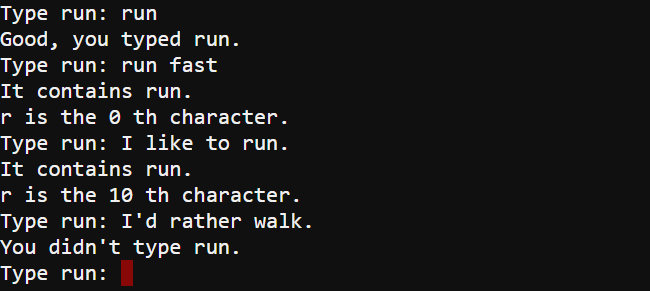Sometimes a script has to make the distinction between an exact match and the presence or absence of a term in a string. Even if string.find() returns 0, that doesn't prove that there aren't more characters following the match. One way to solve this is to use the is equal to == operator to check if the string is an exact match. If it isn't, then use the string.find() method to check if the substring is anywhere in the string.
Example script: comp_find_check_your_turn
- Enter, name, and save comp_find_check_your_turn.
- Click the Send to micro:bit button.
# comp_find_check_your_turn
from microbit import *
sleep(1000)
while True:
s = input("Type run: ")
n = s.find("run")
if(s == "run"):
print("Good, you typed run.")
elif(n != -1):
print("It contains run.")
print("r is the", n, "th character.")
else:
print("You didn't type run.")
- Check the results in the serial monitor.
- Try entering each of these inputs:
run
I like to run
I like to walk - Verify that the script can recognize the difference between these three inputs.

